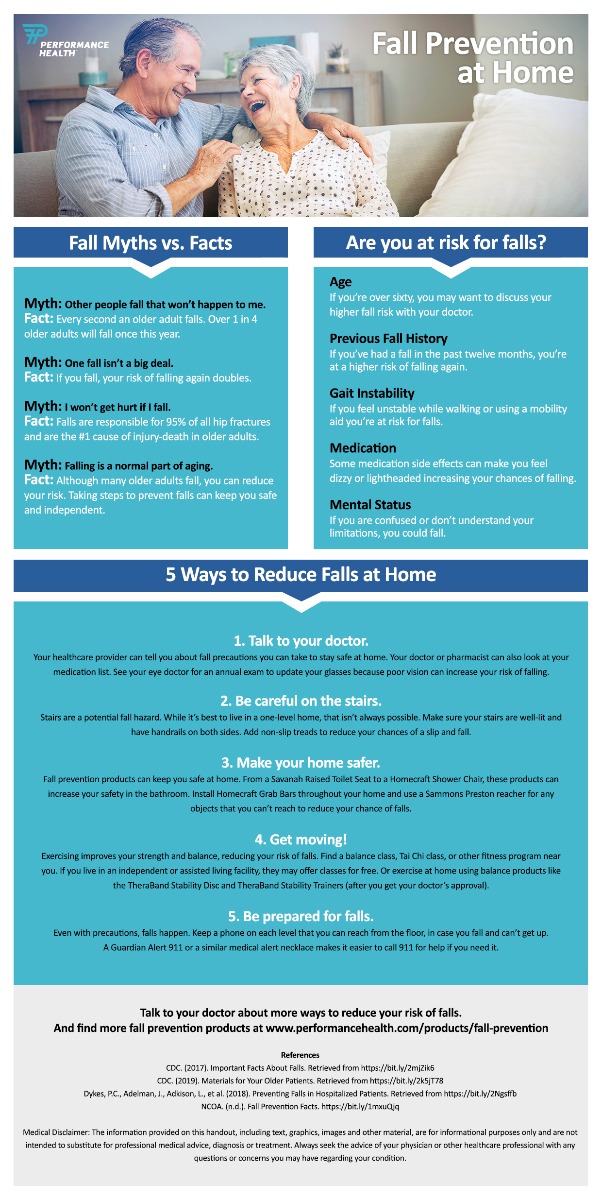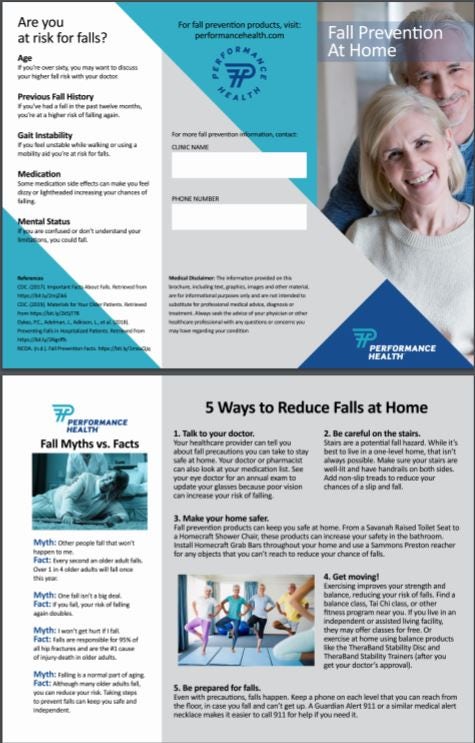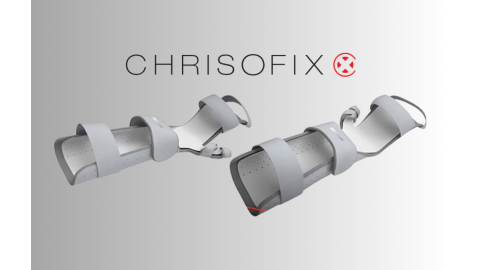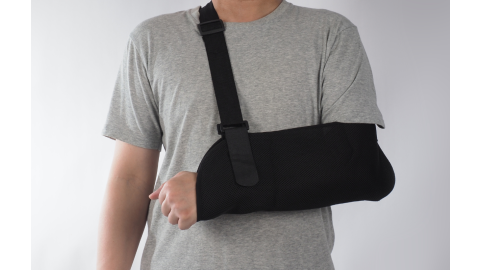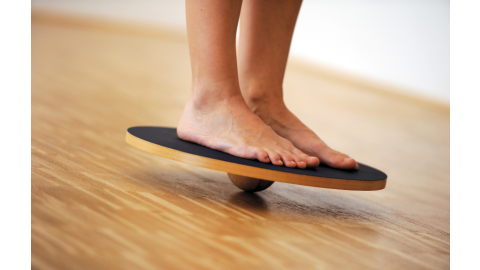Preventing falls is a crucial part of keeping your older patients safe and independent. In addition to talking to your patients about falls while they are in your office, keep fall prevention at the forefront of their minds by sending them home with a fall prevention handout.
You can even look over the handout together as a way to share facts about falls, discuss their fall risk, and explain steps your patient can take to reduce their risk of falls at home.
Download a fall prevention brochure PDF to print and give to your patients.
Hand out this important information at your office, clinic, or hospital. Download your free high res fall prevention brochure now! You can even personalize the brochure with your clinic name and phone number before handing them out to patients.
More About Fall Prevention
Looking for more ways to keep your patients safe in the hospital or at home? From tips to share with your patients to products to prevent falls, learn more about fall prevention!
Brochure Handout Text
Fall Prevention at Home |
|
Fall Myths vs. FactsMyth: Other people fall, that won’t happen to me. Myth: One fall isn’t a big deal. Myth: I won’t get hurt if I fall. Myth: Falling is a normal part of aging. |
Are you at risk for falls?
|
5 Ways to Reduce Falls at Home1. Talk to your doctor.Your healthcare provider can tell you about fall precautions you can take to stay safe at home. Your doctor or pharmacist can also look at your medication list. See your eye doctor for an annual exam to update your glasses because poor vision can increase your risk of falling. 2. Be careful on the stairs.Stairs are a potential fall hazard. While it’s best to live in a one-level home, that isn’t always possible. Make sure your stairs are well-lit and have handrails on both sides. Add non-slip treads to reduce your chances of a slip and fall. 3. Make your home safer.Fall prevention products can keep you safe at home. From raised toilet seats to shower chairs, these products can increase your safety in the bathroom. Install grab bars throughout your home and use a reacher grabber for any objects that you can’t reach to reduce your chance of falls. 4. Get moving!Exercising improves your strength and balance, reducing your risk of falls. Find a balance class, Tai Chi class, or other fitness program near you. If you live in an independent or assisted living facility, they may offer classes for free. Or exercise at home using balance products like the TheraBand Stability Disc and TheraBand Stability Trainers (after you get your doctor’s approval). 5. Be prepared for falls.Even with precautions, falls happen. Keep a phone on each level that you can reach from the floor, in case you fall and can’t get up. A Guardian Alert 911 or a similar medical alert necklace makes it easier to call 911 for help if you need it. |
|
Talk to your doctor about more ways to reduce your risk of falls. |
|
References
CDC. (2017). Important Facts About Falls. Retrieved from https://bit.ly/2mjZik6
CDC. (2019). Materials for Your Older Patients. Retrieved from https://bit.ly/2k5jT78
Dykes, P.C., Adelman, J., Adkison, L., et al. (2018). Preventing Falls in Hospitalized Patients. Retrieved from https://bit.ly/2Ngsffb
NCOA. (n.d.). Fall Prevention Facts. https://bit.ly/1mxuQjq
Medical Disclaimer: The information provided on this site, including text, graphics, images and other material, are for informational purposes only and are not intended to substitute for professional medical advice, diagnosis or treatment. Always seek the advice of your physician or other healthcare professional with any questions or concerns you may have regarding your condition.








 France
France Australia
Australia
